Most travelers start their Peruvian journey in Lima, often staying within the familiar districts of Miraflores, Barranco, or the historic center. They’re beautiful — but Lima is so much more than its postcards. If you’re curious to explore deeper, this guide will show you a different side of the city — full of art, history, and local flavor.
If you haven’t already, check out my Things to Do in Lima post for a complete overview of the city’s highlights before venturing off the beaten path. Then, when you’re ready to dig deeper, start with these three hidden gems: Callao, La Punta, and the Magdalena Market.
You can buy a tour to Callao here
Callao Monumental: Lima’s Urban Art Renaissance
Once known mainly as Lima’s gritty port area, Callao has reinvented itself over the past decade. In the historic neighborhood of Callao Monumental, old colonial buildings now house vibrant murals, galleries, and creative spaces.
I wasn’t entirely sure what to expect in Callao. After reading a short description in my guidebook, I decided to give it a go. I don’t usually read other travel blogs or scroll social media before visiting a destination — I prefer seeing things with my own eyes and forming my own impressions without being influenced by trending spots or curated photos. That’s exactly why I still like guidebooks: they’re simple, factual, often with just one or two images, giving you enough information but leaving room for discovery.
So I went by myself and explored the area on foot, wandering through the narrow streets filled with color and life. Every wall seemed to tell a story — huge murals celebrating Afro-Peruvian culture, portraits of local heroes, and bold graffiti expressing hope and resistance. It felt raw and real, a side of Lima you rarely see in guidebooks.
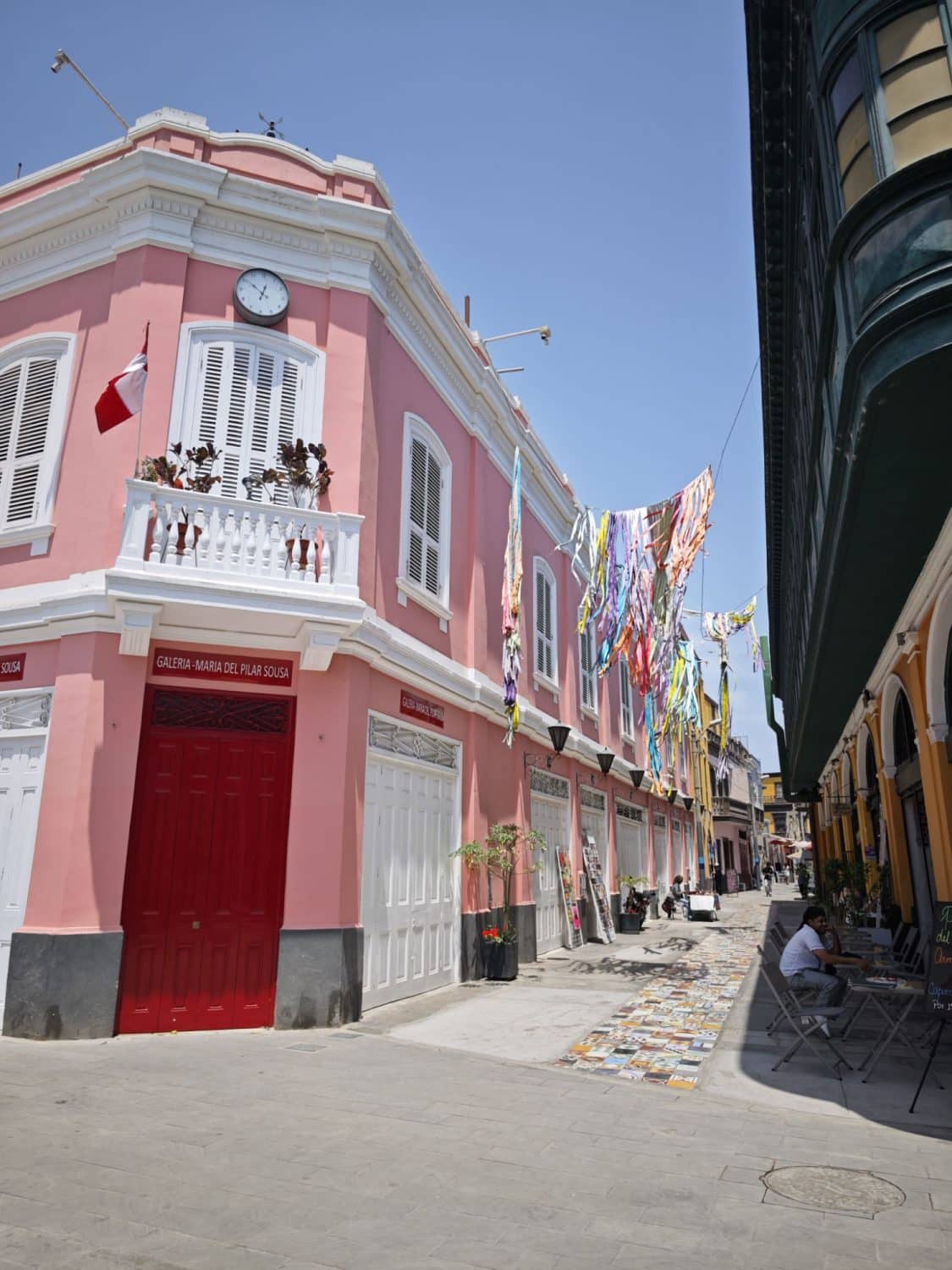
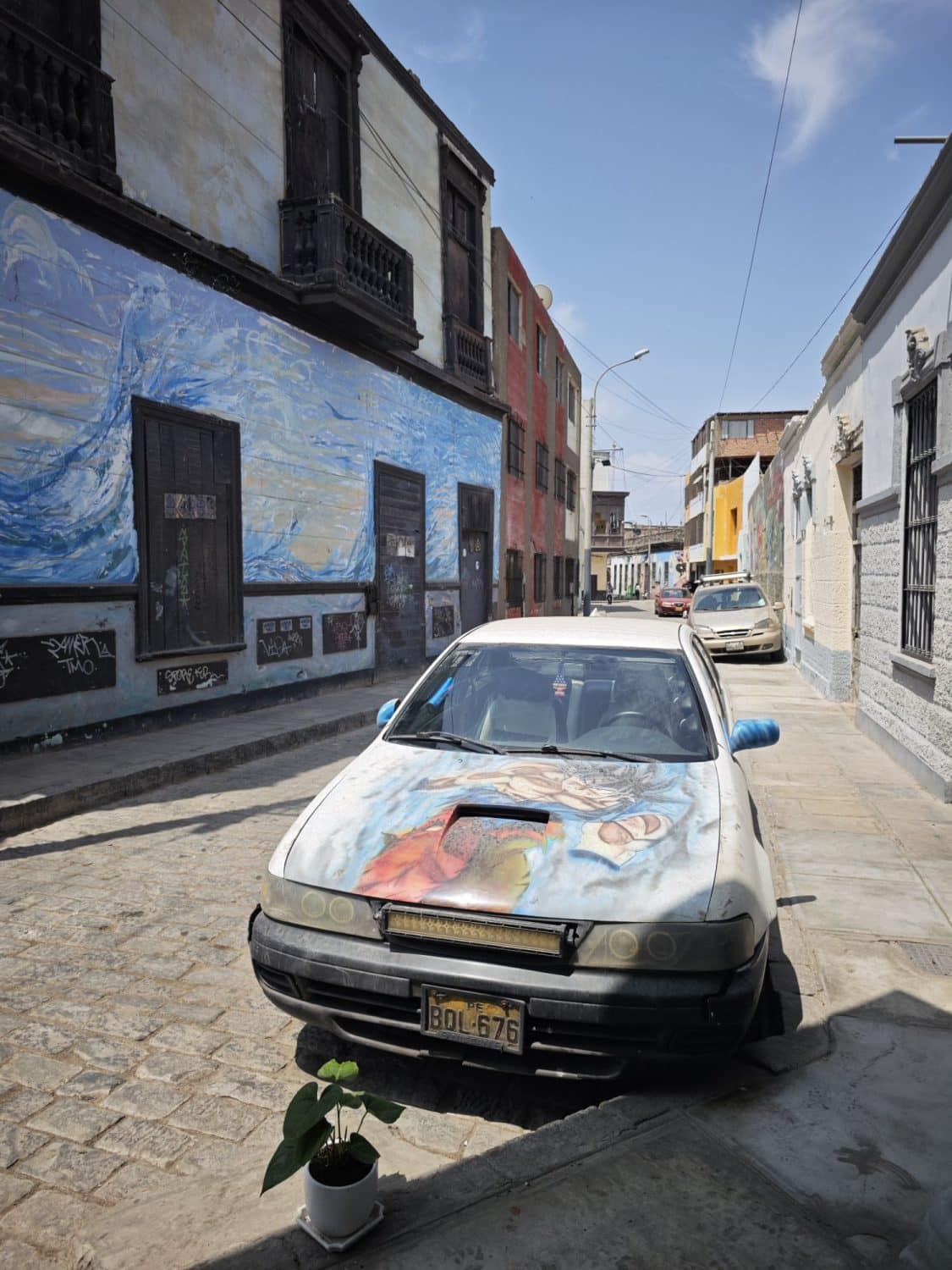
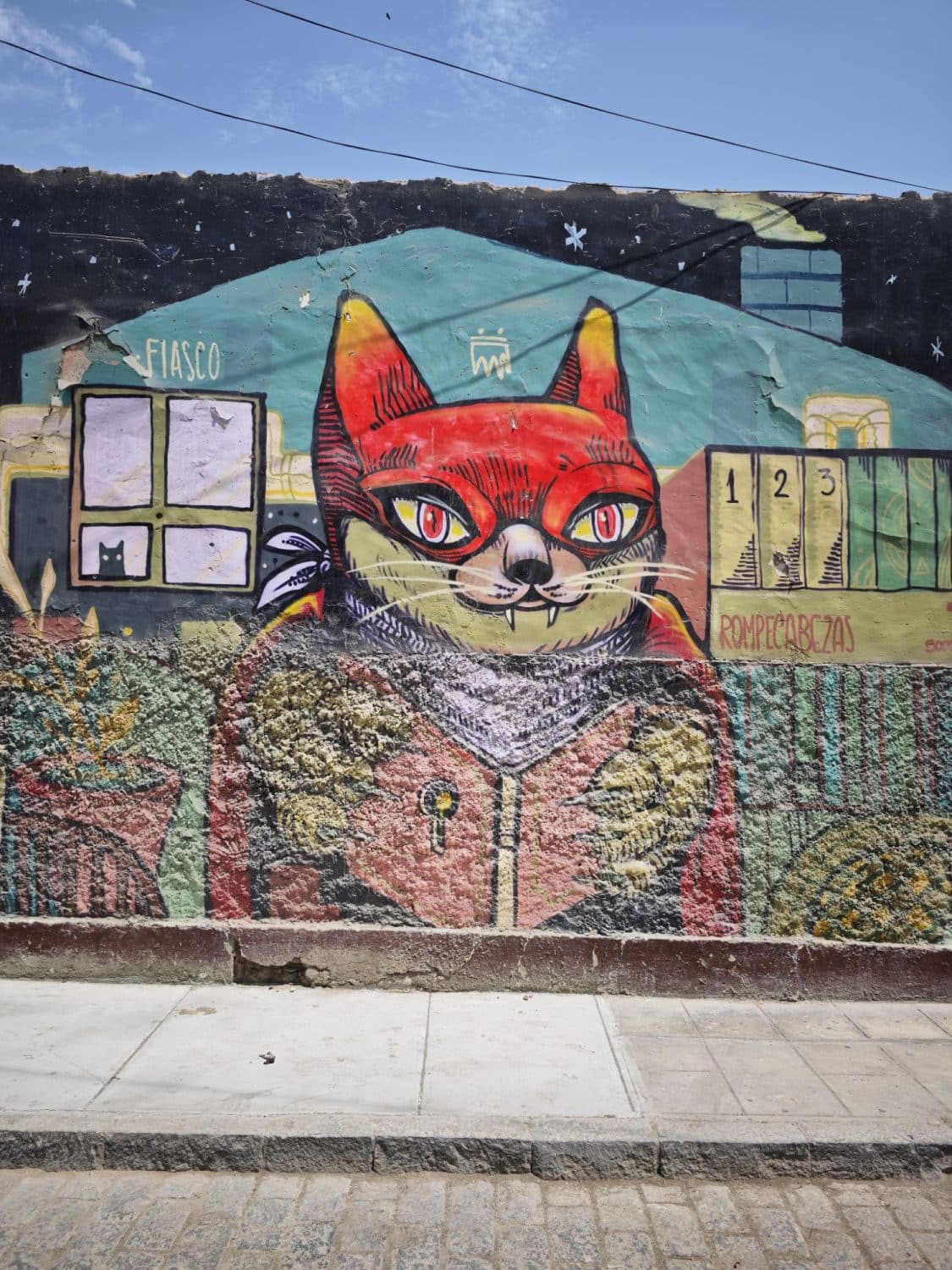
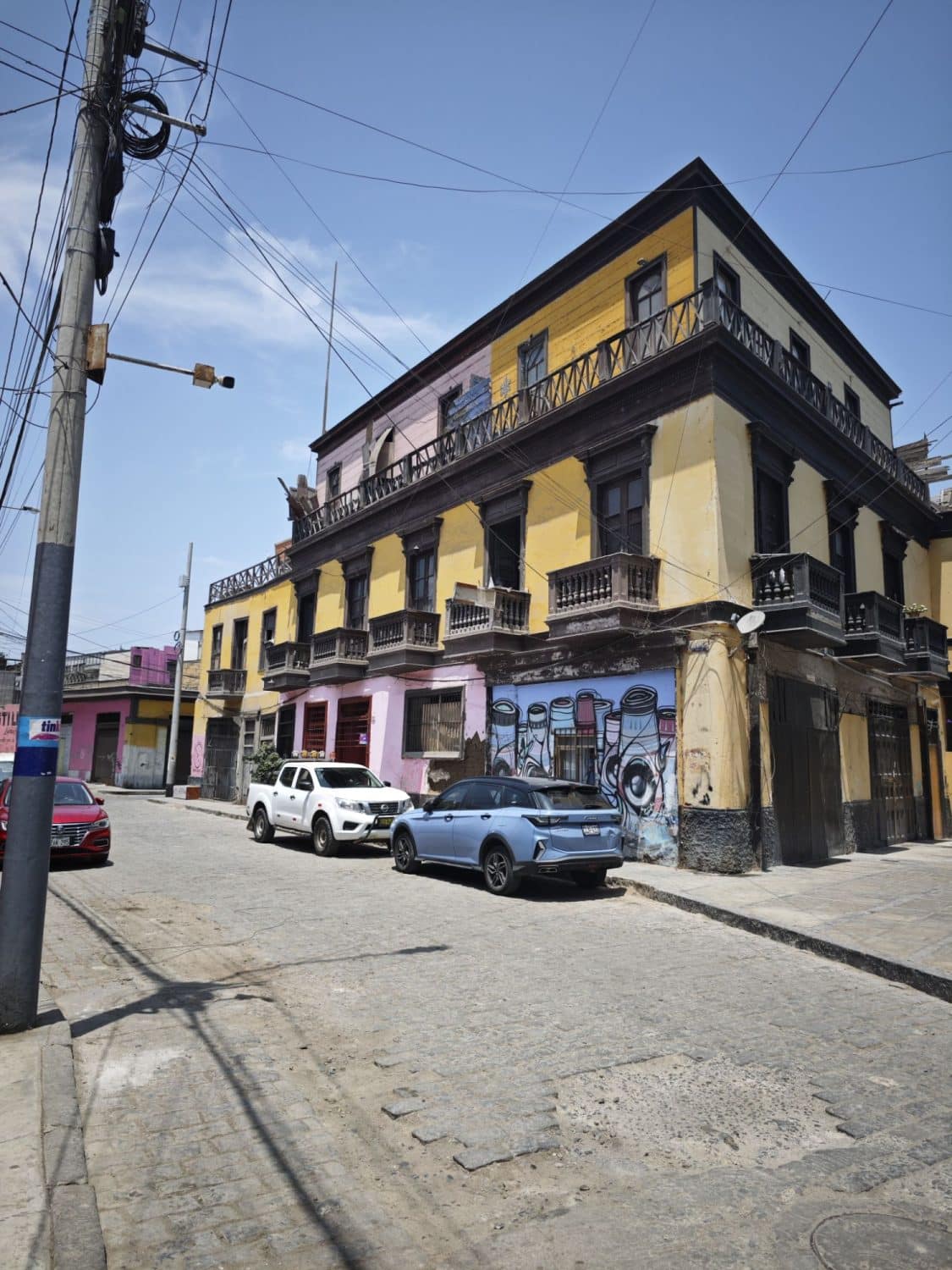
The Colorful Umbrella Street of Callao
Just beside the church runs one of Callao Monumental’s most photogenic streets — a short pedestrian lane covered with colourful hanging umbrellas that sway gently in the breeze. It’s a cheerful spot and one of the few clearly tourist-friendly corners of the area, lined with a handful of small restaurants and cafés perfect for a quick stop. The tiled pavement, laid out in decorative patterns, adds a charming touch and gives the street a more polished feel compared to the wilder, mural-covered alleys nearby. It’s a pleasant place to pause, take a few photos, and soak in the lighter, more playful side of Callao.
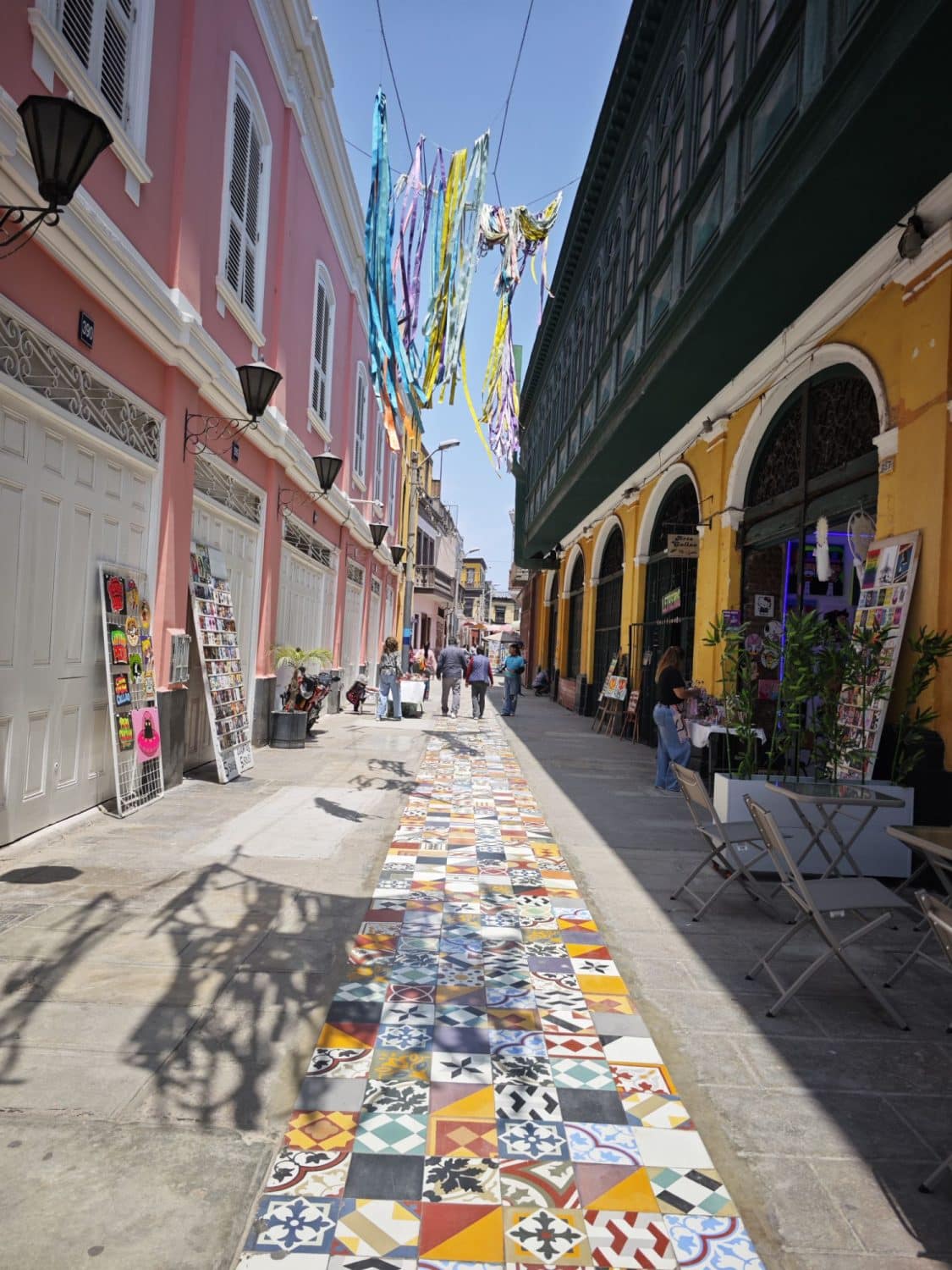
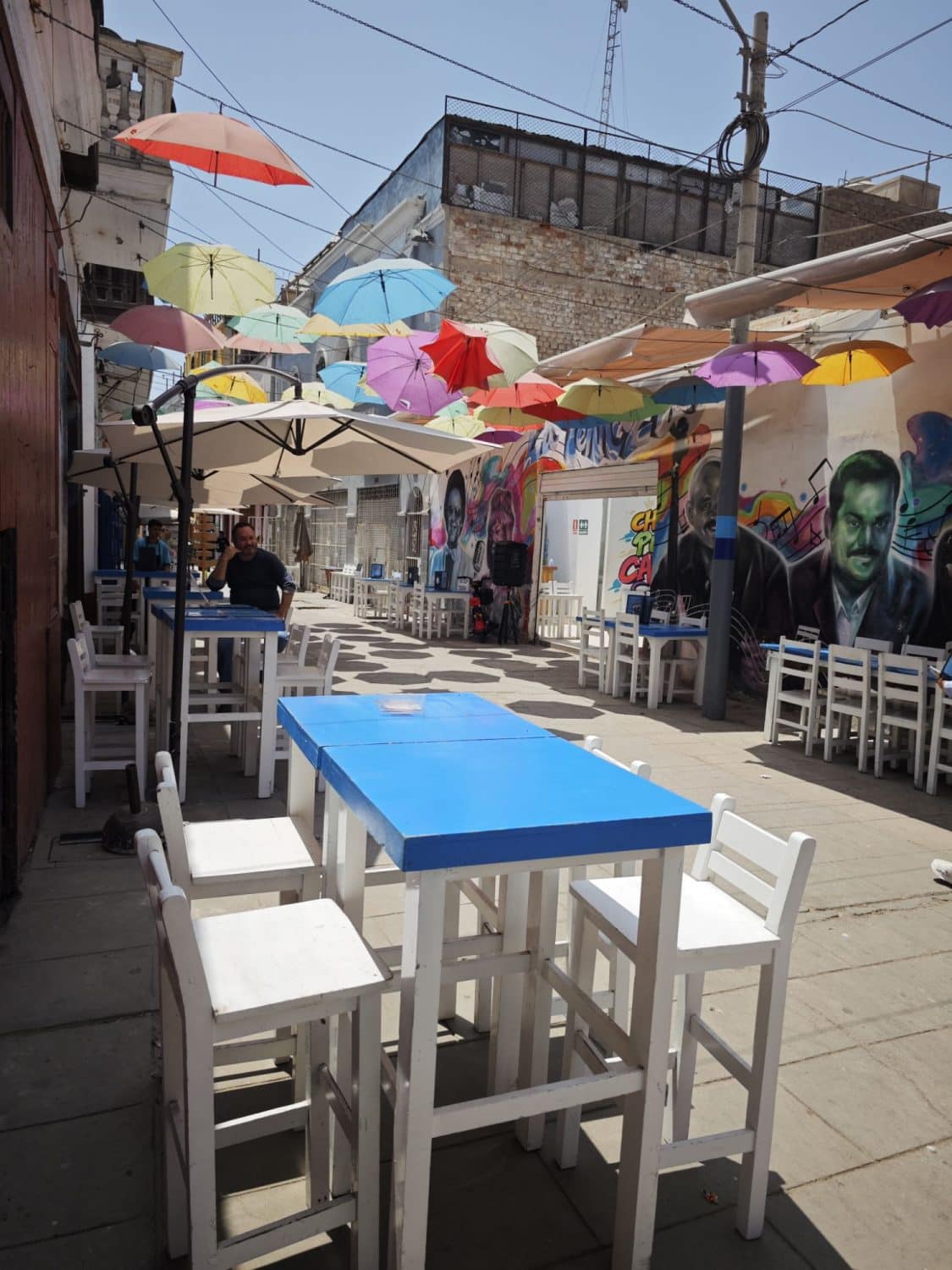
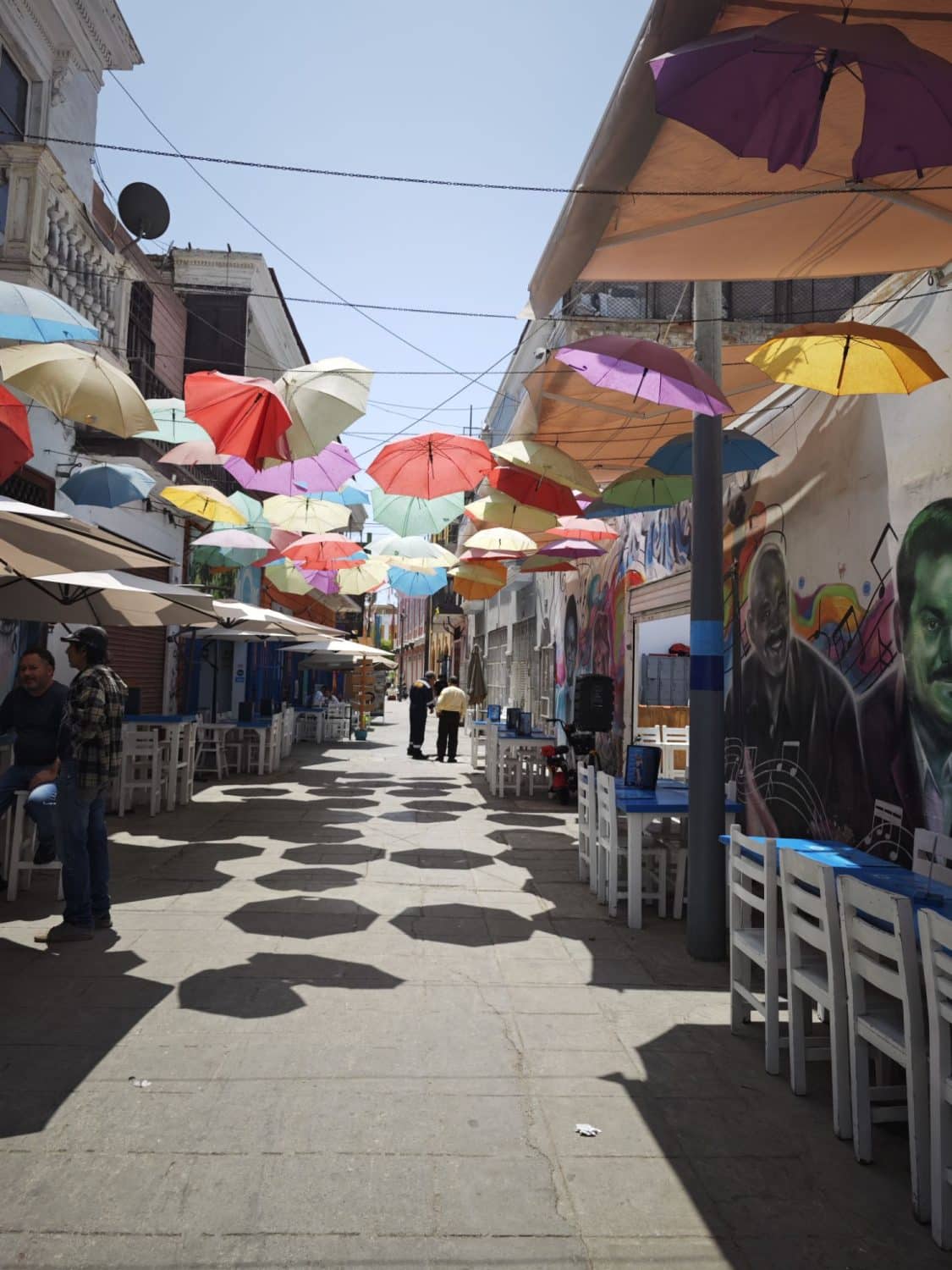
Iglesia Matriz del Callao
At the heart of the district, you’ll find the Iglesia Matriz del Callao, a beautiful historic church dating back to 1893. Its cream-coloured façade and traditional bell towers stand in striking contrast to the modern street art that surrounds it.
Stepping inside offers a moment of calm — a quiet space that reflects Callao’s older, more traditional side amid the district’s vibrant and creative atmosphere.

Casa Ronald
From the rooftop of the Casa Ronald building, I watched the colorful rooftops stretch toward the ocean — a view that perfectly captures Lima’s contrasts: chaotic, creative, and full of soul. It’s worth stepping inside the building too: on the lower floors you’ll find photography galleries showcasing local and international artists, and even a cozy Italian restaurant where you can grab a coffee or light lunch while soaking up the creative atmosphere. It’s a great spot to take a break and chat with the artists who often work or exhibit there.


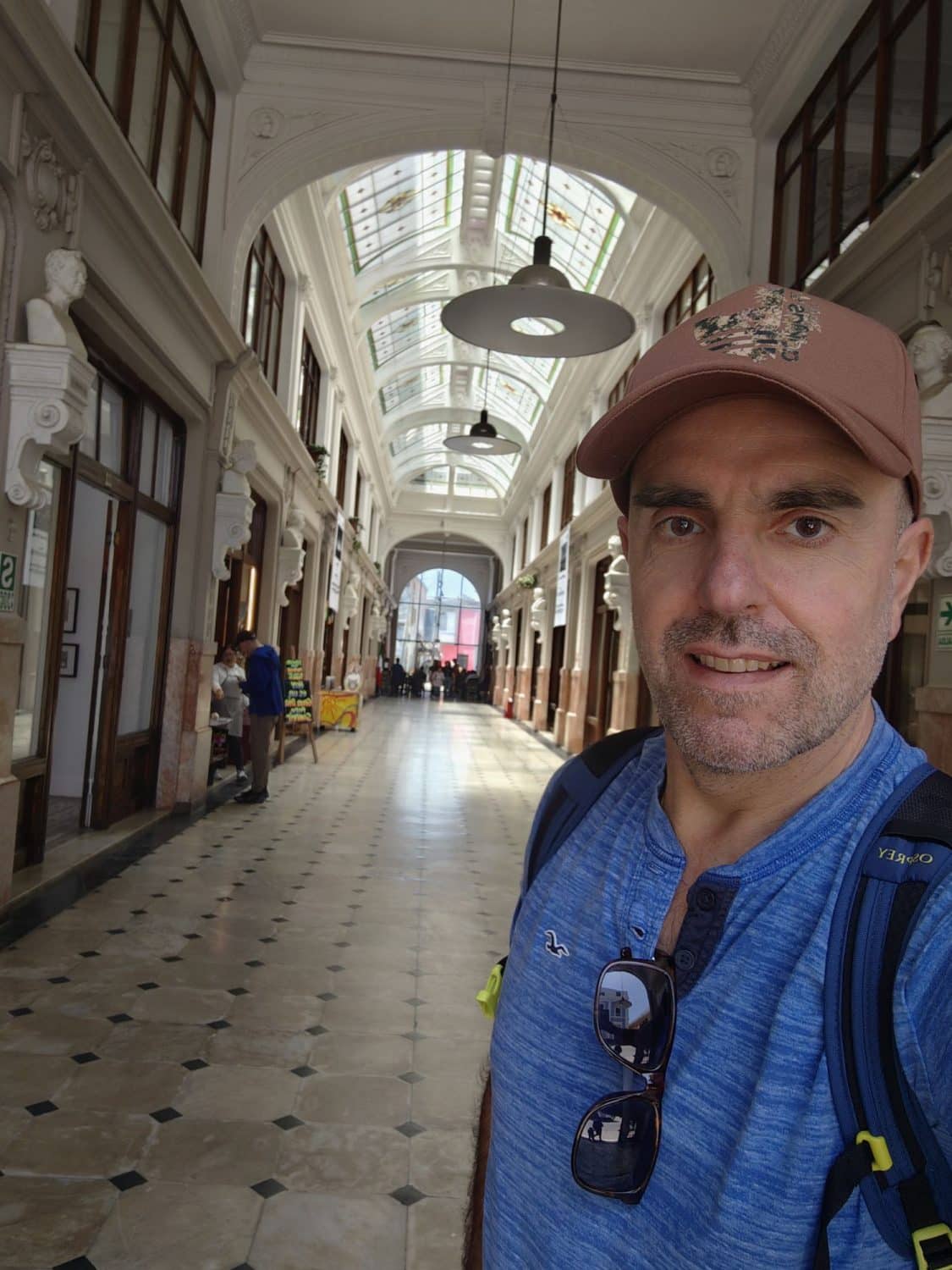
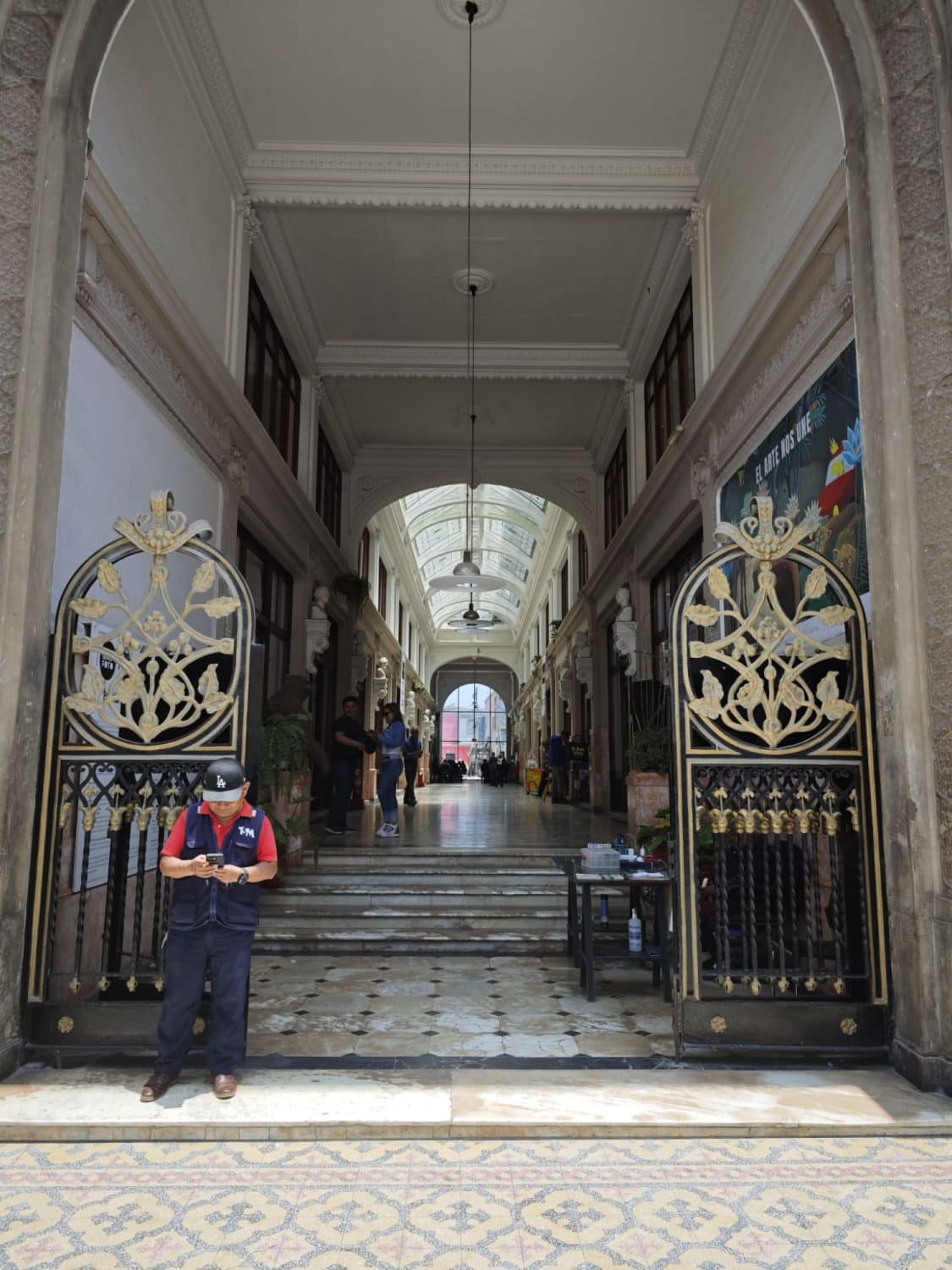
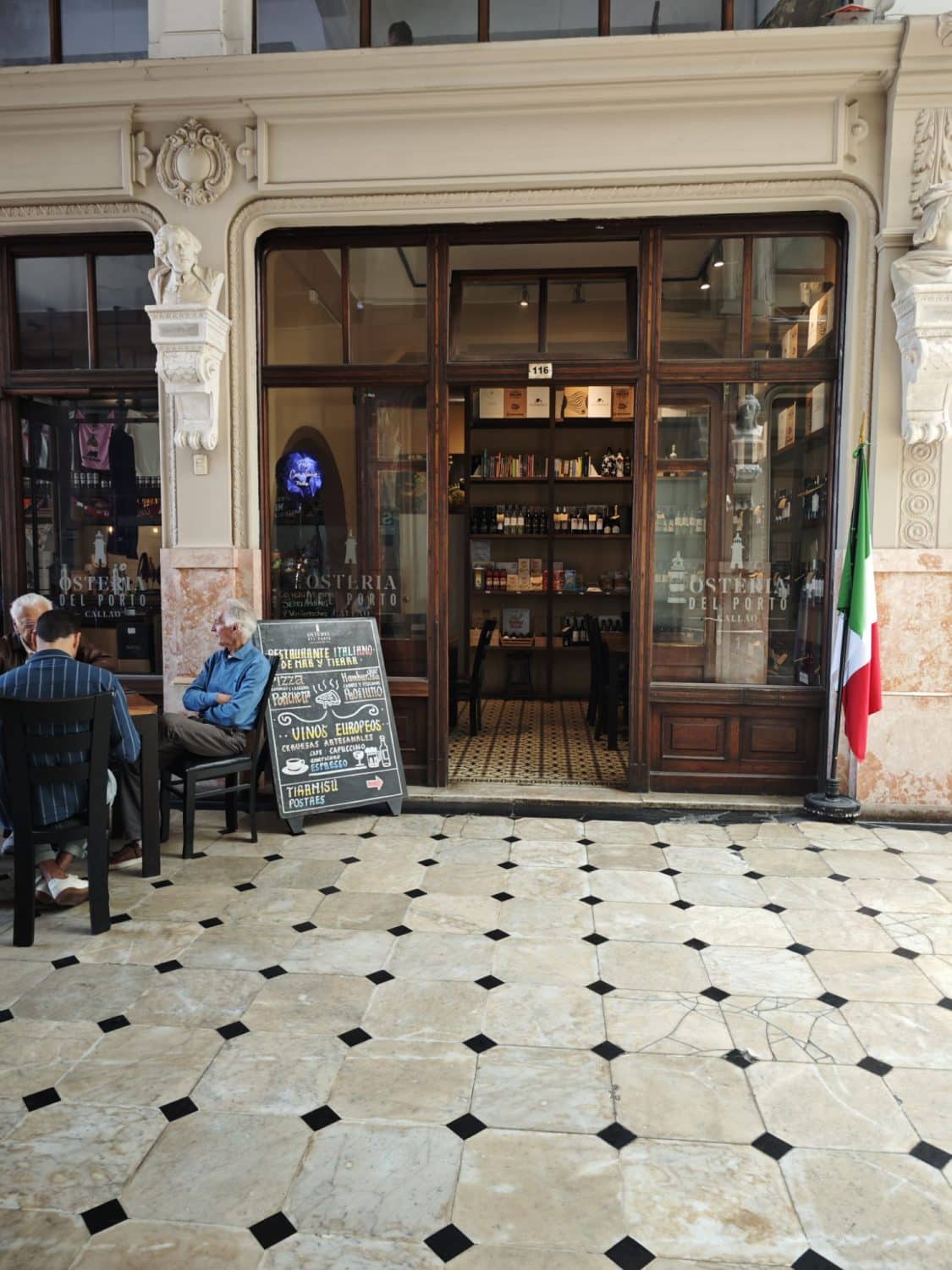
Plaza Grau
From Plaza Grau, the main square in Callao, you can also join boat tours around the harbor, offering a different perspective on the city’s maritime life and a close-up view of the port’s working ships — a fascinating contrast to the colorful calm of Callao Monumental.
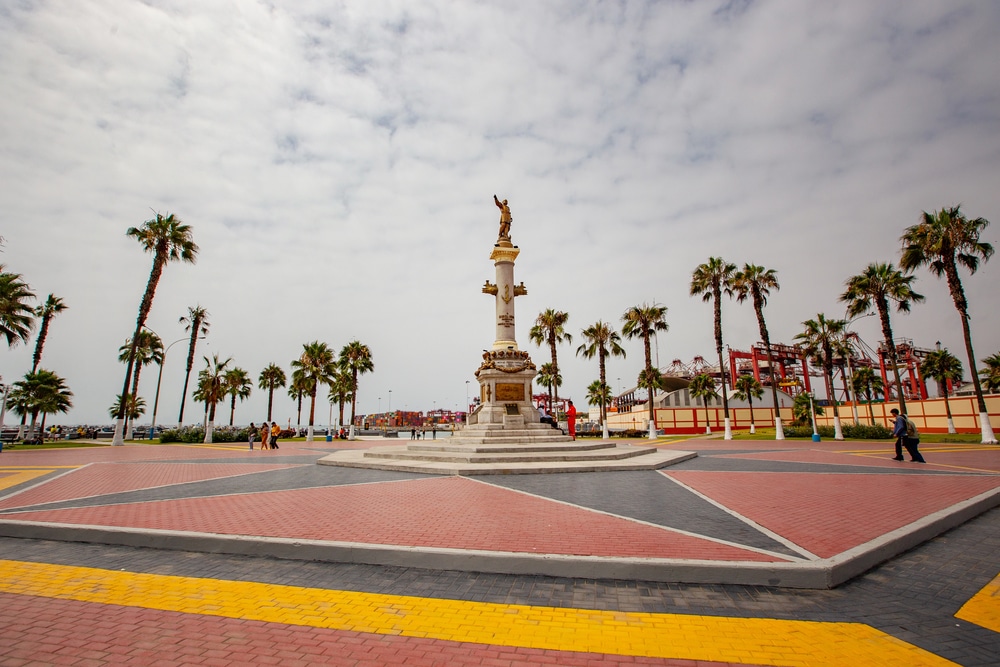
Local Market
There’s also a local market nearby that I walked through briefly — but personally, I wouldn’t recommend spending much time there. It’s best to stick to the main Callao Monumental area, where you’ll feel safe and welcome, as some of the surrounding neighborhoods can still be a bit rough.
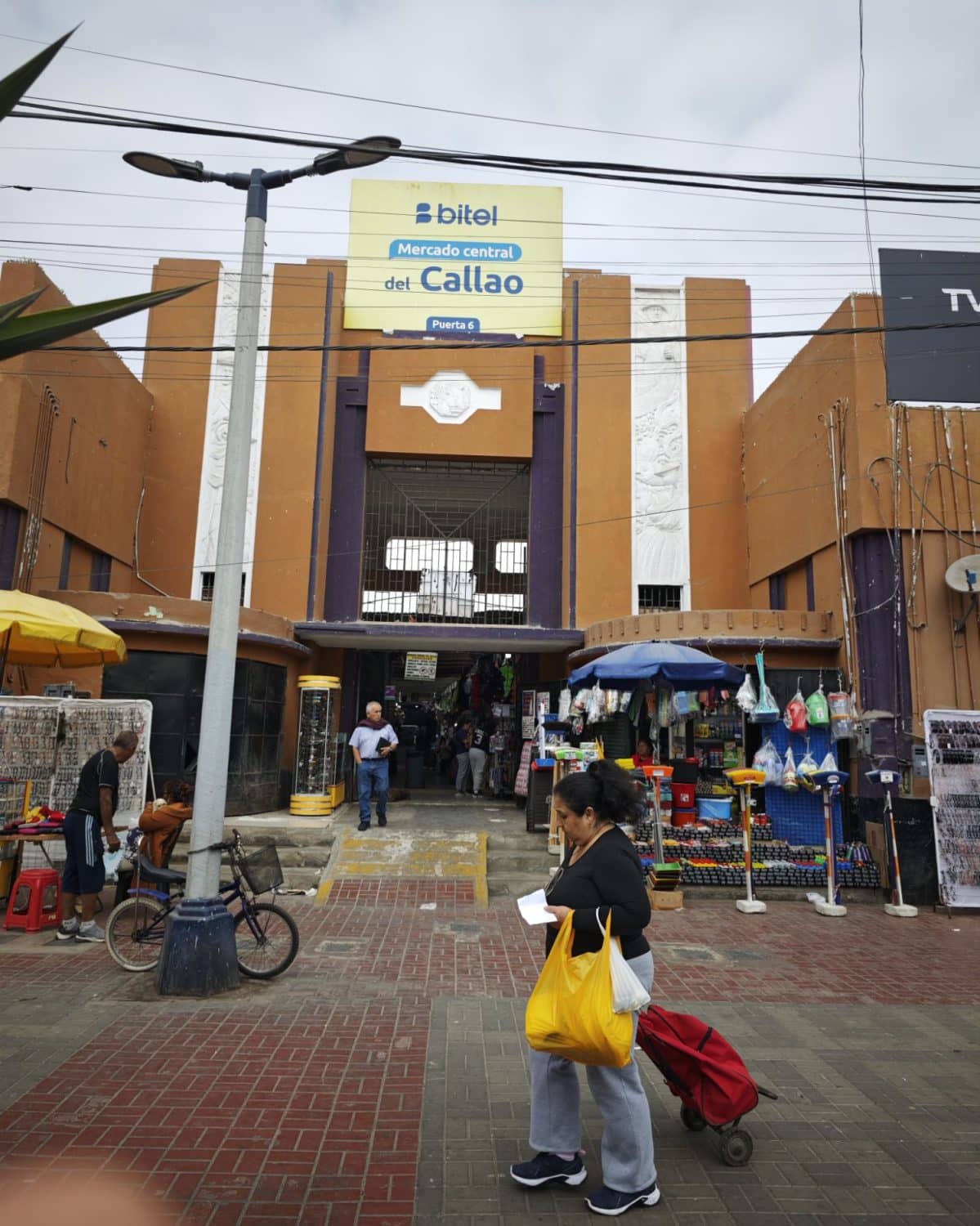
Where to eat in Callao
I often prefer eating in local restaurants, the kind of places where everyday people have lunch — simple, friendly, and wonderfully authentic. In Callao, I found a small restaurant along the main road, nothing fancy from the outside, but full of locals and with that welcoming, family-run atmosphere I always look for.
For the equivalent of just £4, I got a two-course meal: a plate of ceviche to start, followed by a hearty main dish. The staff were incredibly kind and happy to chat, curious about where I was from and what I thought of their neighborhood.
Like many local eateries in Peru, the meal also came with a free drink, usually a glass of chicha morada — a refreshing purple corn beverage with cinnamon and lime — or sometimes a simple homemade maracuyá juice. It’s a small gesture, but it says a lot about the warmth of these little, non-touristy places that I love discovering.


How To Get To Callao
The best way to get there is by taxi or Uber, as there are no direct buses from Miraflores to Callao. The ride takes about 40–50 minutes depending on traffic, and it’s worth going early in the day when the light is best for photography.
The Real Felipe Fortress: A Step into History
Before heading to La Punta, I stopped at the Real Felipe Fortress, an imposing 18th-century military stronghold built to defend the port of Callao from pirates and foreign invasions.
The fortress is the largest colonial military structure in South America, and walking through its thick stone walls feels like stepping back in time. Inside, you’ll find museums dedicated to Peru’s naval history, ancient weapons, and even tales of ghostly soldiers said to haunt the corridors.
Climb the watchtowers for panoramic views over Callao Bay and imagine Spanish galleons anchored offshore — it’s one of Lima’s most atmospheric historic sites, and surprisingly, still off the radar for most travelers.
You can buy a tour for Real Felipe Fortress which also include a tour to Callao here.
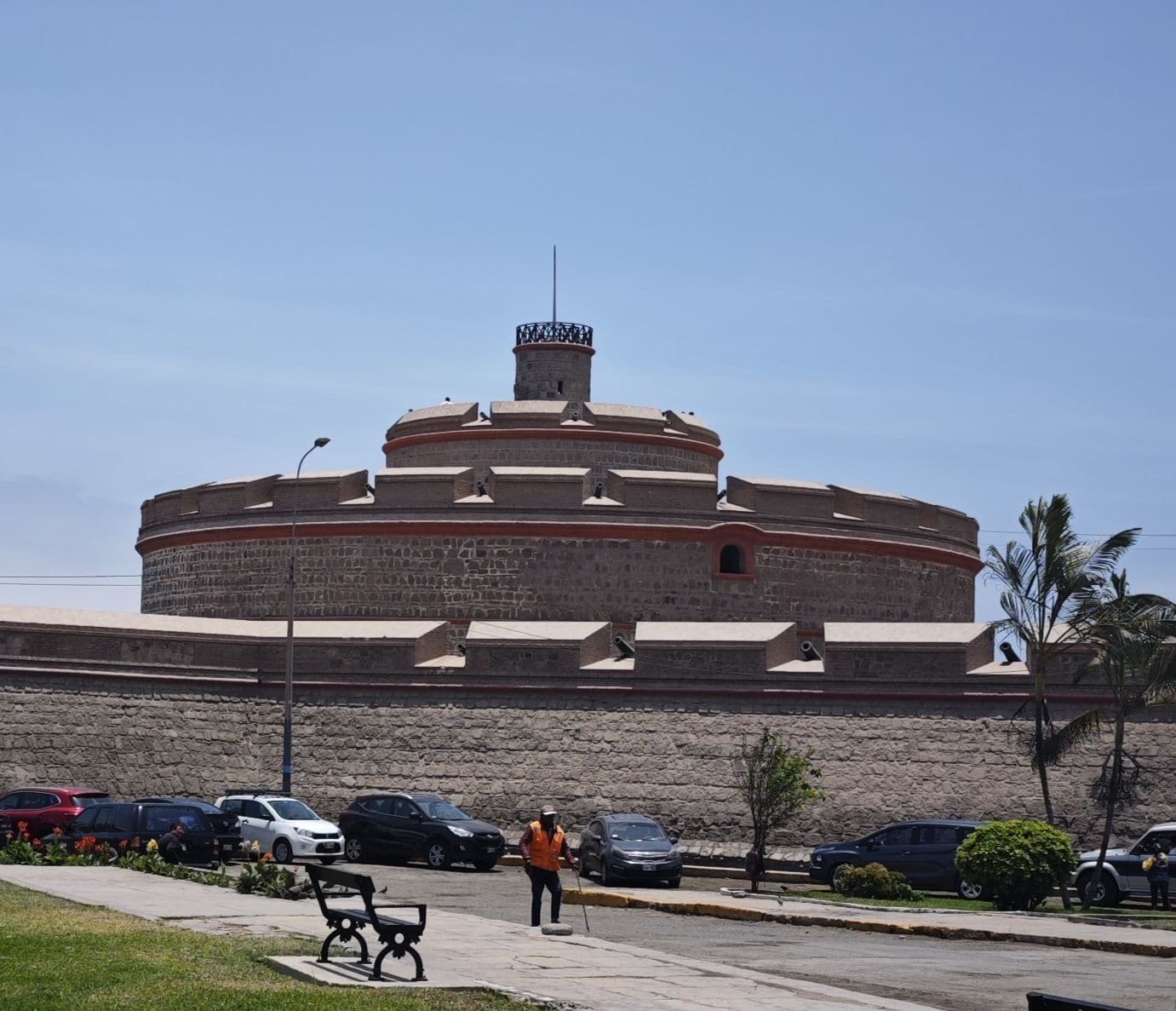
La Punta: Lima’s Peaceful Peninsula
A short drive away from Callao, the atmosphere changes completely. La Punta is a tranquil seaside neighborhood, a narrow peninsula lined with elegant old mansions and small pebble beaches. It’s where many Limeños come on weekends to escape the city chaos.
What struck me immediately was that I didn’t see any Western tourists here — which made the visit even more interesting. It’s always nice to watch how local people spend their free time when they’re not performing for visitors. On weekends, the main square fills up with families taking photos, kids running freely around the benches, and groups of friends sitting in the shade chatting and eating ice cream. It’s relaxed, lively, and wonderfully authentic.
I spent a sunny morning walking along the Malecón Pardo, watching pelicans glide over the surf and fishermen repair their nets. The sea breeze was refreshing after Lima’s traffic and concrete.
For something more adventurous, take a boat tour to the Palomino Islands, home to large colonies of sea lions where, in the right season, you can swim among them is an unforgettable experience — surreal and surprisingly peaceful.
You can buy a trip to Palomino Islands with Speedboat including swimming with Sea Lions here.

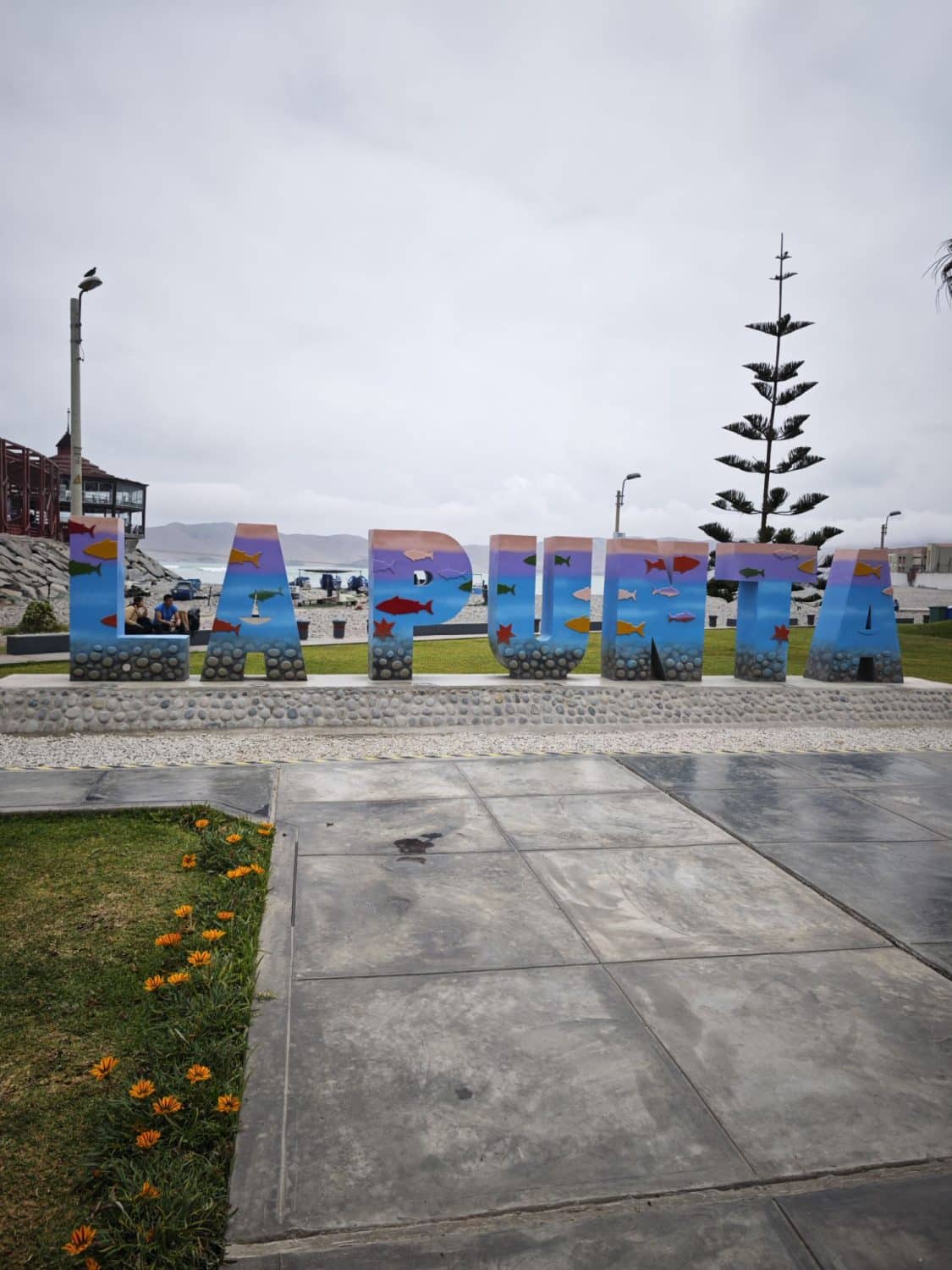
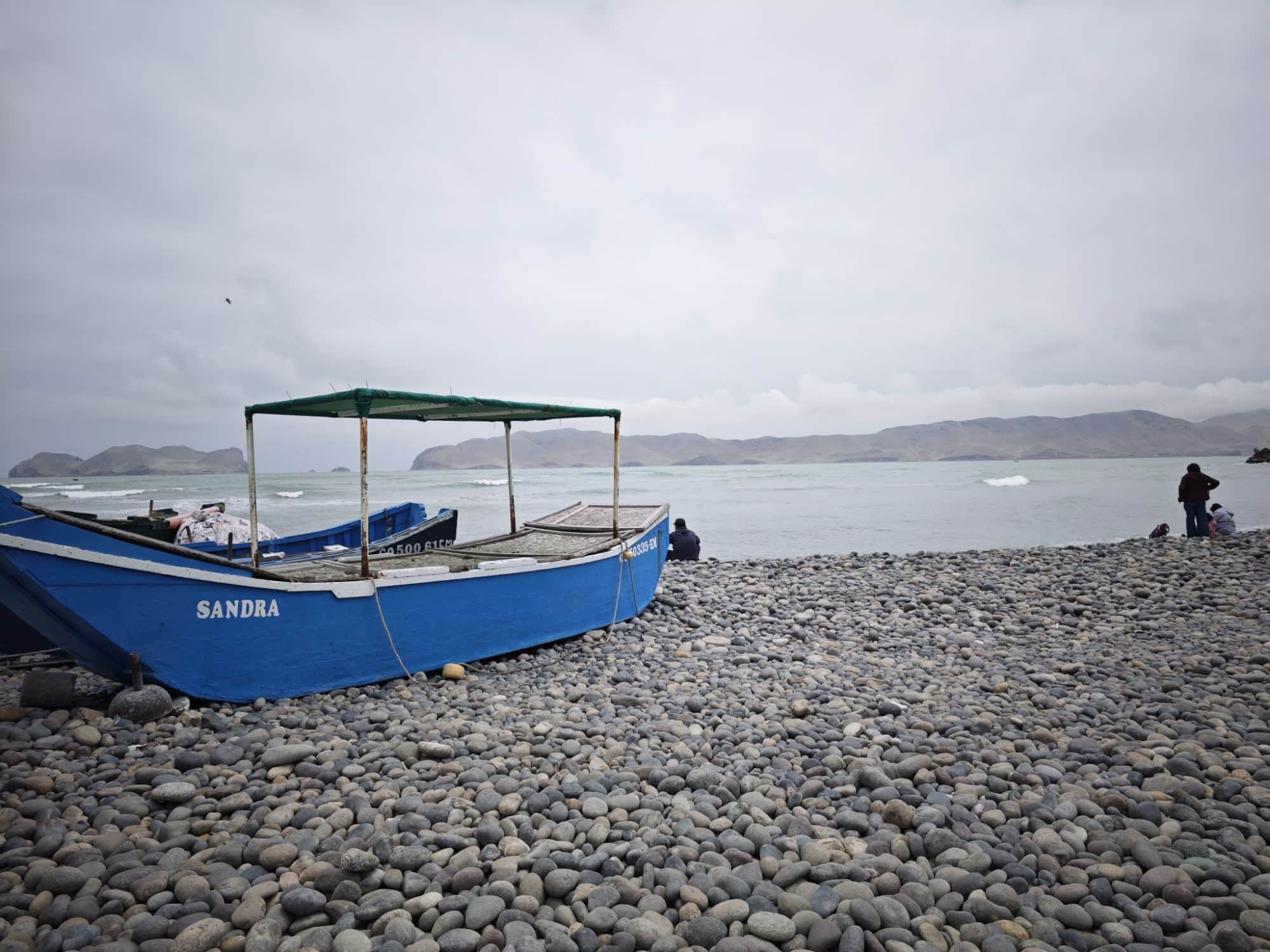
Restaurants
Back on shore, I noticed a few restaurants with rooftop terraces overlooking the sea, perfect spots to relax with a view of the Pacific. I didn’t stop for lunch myself, but there are several cevicherías worth trying if you have time — the ceviche in La Punta is some of the freshest you’ll find in Lima, and enjoying it with the sound of waves in the background makes it even better.
The Promenade
Walking from Malecón Pardo to the North side of La Punta, there’s also a lovely promenade lined with beautiful colonial houses overlooking the water. The stretch includes a couple of quiet beaches, perfect for a gentle stroll or simply sitting by the sea watching the waves hit the pebbles — one of the most peaceful corners of the district.
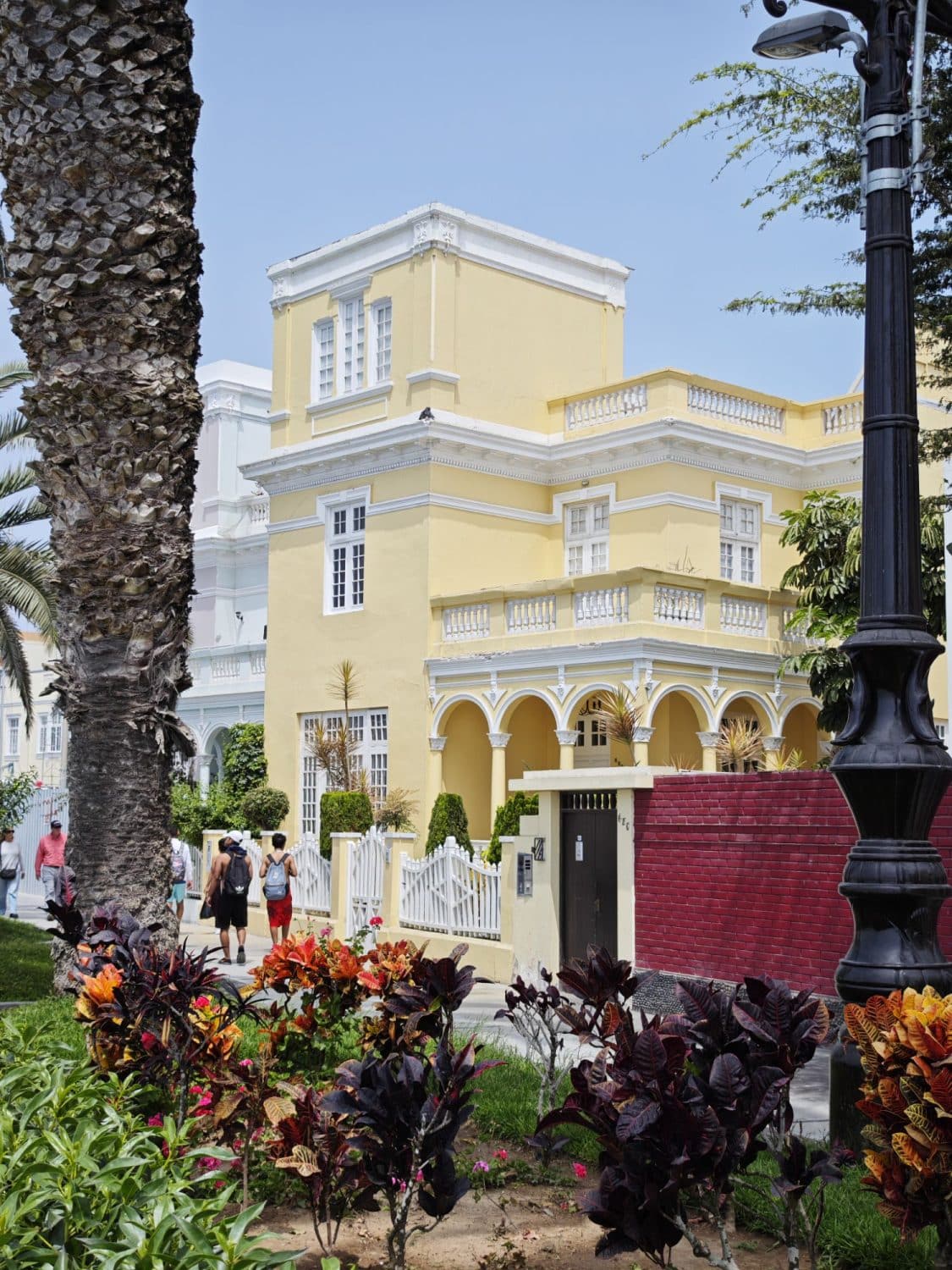
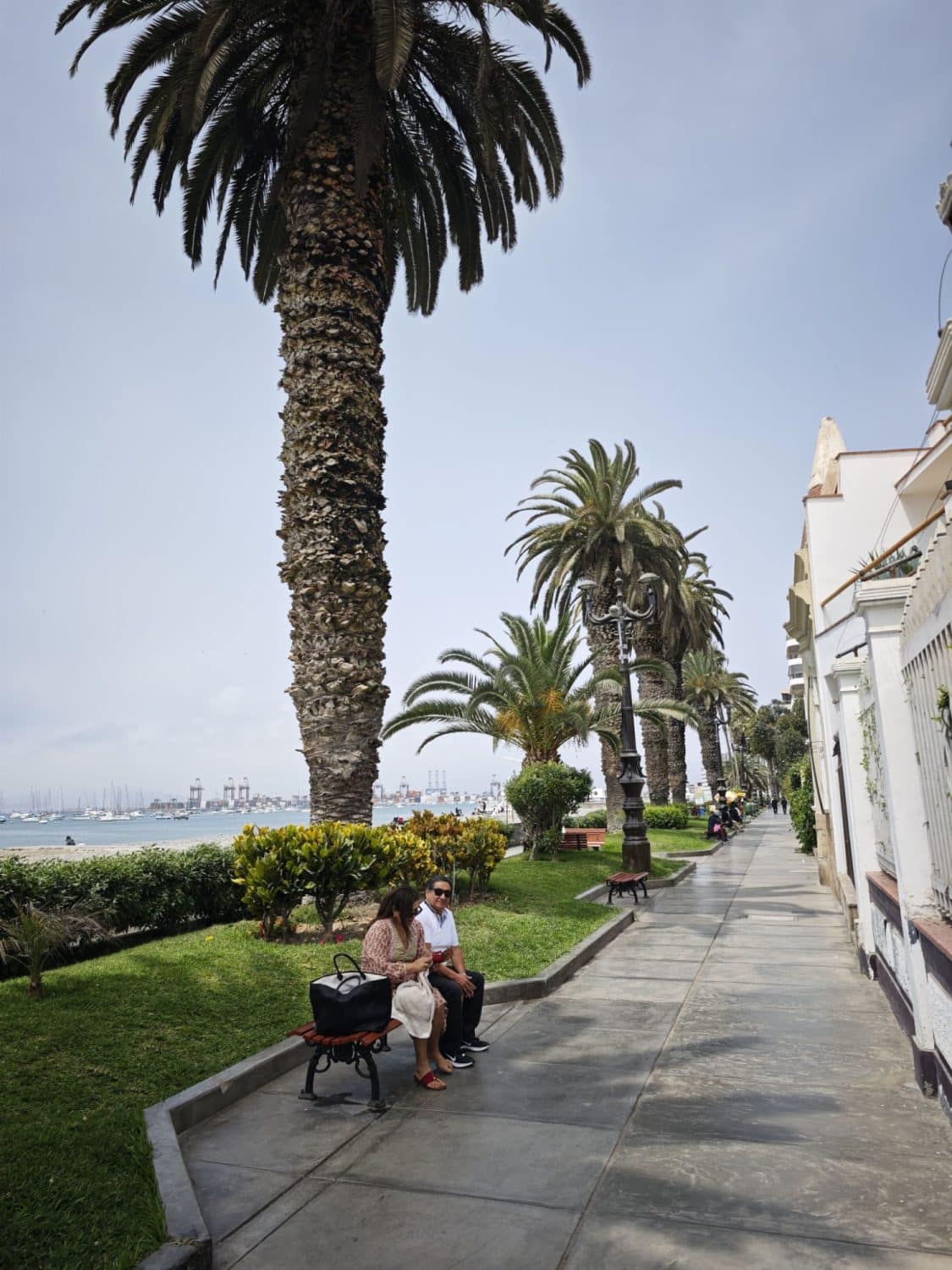

The Magdalena Market: A Slice of Everyday Lima
I went in the morning, when the Magdalena Market (Mercado de Magdalena del Mar) was already buzzing with life — vendors setting up their stalls, shoppers bargaining, and the smell of coffee and fried fish in the air. I wandered between piles of tropical fruit, fresh fish, and Andean potatoes of every imaginable color.
At one stand, I tried a papaya milkshake, freshly made and deliciously sweet — and it cost the equivalent of just two euros. Hungry, I grabbed a stool at a ceviche counter and ordered a plate for a few soles. The vendor served me “leche de tigre” in a plastic cup — the spicy ceviche marinade Peruvians drink as a pick-me-up. We chatted about the best fish in season while the market hummed around us.
The market and the surrounding area are very safe, and it’s a great place to wander without feeling rushed. After exploring inside, take a few minutes to visit the main plaza opposite the market and the church beside it — both are pleasant spots to rest and people-watch before heading back.
If you’re a coffee lover, don’t miss the chance to try a cup made from freshly roasted Peruvian beans — many small cafés around the market take real pride in their coffee.





Immaculate Heart of Mary Church
If you have time head north few block (10 minutes walk) to the Immaculate Heart of Mary Church (Iglesia del Inmaculado Corazón de María) — a striking neo-Renaissance landmark completed in the 1950s and the tallest church in all of Lima. Its impressive dome and soaring façade dominate the skyline of Magdalena del Mar. Step inside for a moment of quiet, admire the bright interior, or simply take in the sense of community that gathers around it every day.
Getting back to Miraflores is easy: you can hop on one of the many direct buses heading that way or take the usual taxi or Uber for a faster, more comfortable ride.

Magdalena Market Video
Practical Tips for Visiting Lima’s Hidden Corners
- 🕓 Getting there: All three places are within an hour’s drive of central Lima. Use Uber or Cabify for safety and convenience.
- ☀️ Best time to visit: Lima’s skies are clearest from December to April. During the rest of the year, expect cool, misty mornings (the garúa).
- ⚠️ Safety: Stick to Callao Monumental and the fortress during daylight hours and join an organized tour if possible.
- 🍽️ Where to eat: Try local restaurants (see if busy and clean first) or El Colorao or Cevichería Freddy in La Punta for seafood near the beach.
- 🗺️ Start your day in Magdalena, exploring the lively market, the main plaza, and the impressive Immaculate Heart of Mary Church. Then head to Callao Monumental to see the street art, photography galleries, and the colourful umbrella street. Continue on to the Real Felipe Fortress for a dose of history, and finish your day by the sea in La Punta, strolling along the promenade or enjoying a ceviche with ocean views.
Why You Should Explore Beyond Miraflores
Lima can be chaotic, complex, and overwhelming — but that’s exactly what makes it fascinating. Once you step beyond its polished districts, you’ll find a city full of creativity, history, and resilience.
I’ve always loved exploring non-touristy areas rich in history, wherever I travel. It’s the best way to understand a place’s true character — to meet local visitors as well as foreign travelers, and to get a glimpse of the real daily life of the people, especially in markets where culture, food, and community come together.
Exploring Callao, La Punta, and the Magdalena Market gave me a glimpse of the Lima that locals love — where stories unfold in street art, seafood stalls, and seaside sunsets.
If you’re a traveler who loves discovering places that most visitors overlook, this is the side of Lima waiting for you.
The Callao Video
Lived in England since 1998 and travelled the world since 2005, visiting over 100 countries on 5 continents. Writer, blogger, photographer with a passion for adventure and travel, discovering those off beat places not yet on the tourist trail. Marco contributes the very best in independent travel tips and lifestyle articles.

